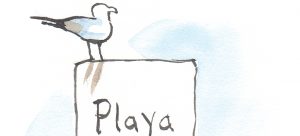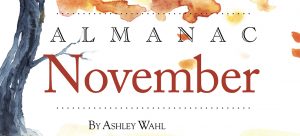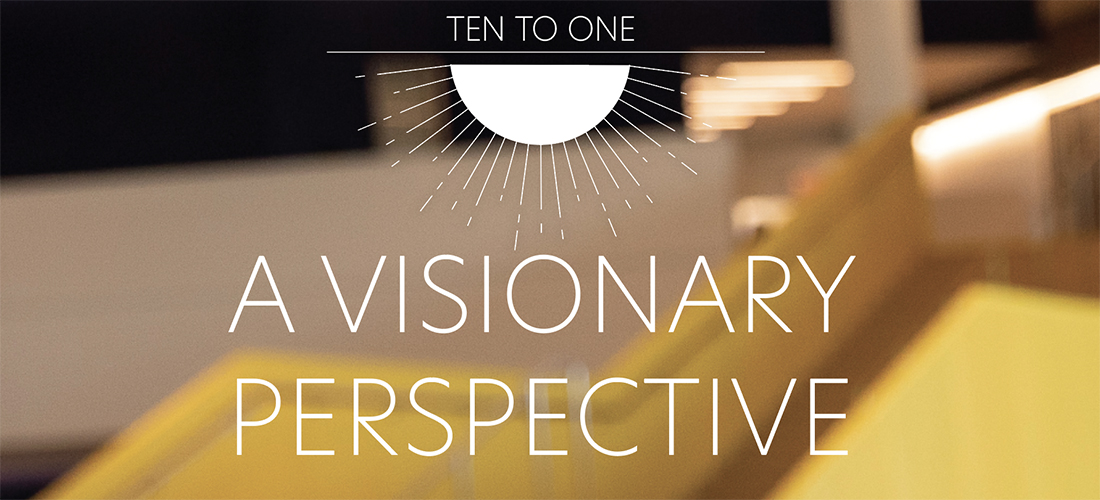
A Visionary Perspective
A lot can happen in 10 years. This city — and magazine — are living proof. Greensboro’s past and present have graced our pages over the last decade. Heading into our next 10 years, we decided to ask a handful of Gate City visionaries 10 questions, including their hopes and dreams for what Greensboro might look like 10 years from now. We’ll let them do the talking.
HAROLD L. MARTIN SR.

Harold L. Martin Sr. has served as chancellor of North Carolina A&T State University since 2009 and is the first alumnus ever to hold the position. Martin was heralded as an education and business thought leader in TIME magazine’s 2020 edition of The Leadership Brief. In 2019, he was honored by the Thurgood Marshall College Fund with the Education Leadership Award, and in 2017 he was named America’s most influential Historically Black Colleges and Universities leader by HBCU Digest. In 2015, Martin was named to the EBONY Power 100 list alongside some of the nation’s most prominent African American thinkers, artists, government officials and business leaders. Under his leadership, A&T has emerged as the top-ranked historically black public university in the nation.
OH: What was it like growing up in Winston-Salem?
HM: Often I refer to the saying, “It takes a village to raise a child.” I lived in that village — it was both protective and supportive. Our school, Carver Consolidated School, was segregated. I began Carver in first grade and ultimately graduated in the last senior class before the school became integrated. Carver was a critical part of our community.
OH: What role did your parents play in determining your path in life?
HM: Our parents were not able to get a college education themselves. They grew up in large families — each came from a family of 13 children — and they were poor. My father was a Baptist minister, so there were high expectations for the behavior of my brother, sister and I. Our parents were highly committed to the three of us going to college — no exceptions.
OH: Why did you decide to attend North Carolina A&T State University?
HM: One of my most influential teachers — my high school basketball and tennis coach — had graduated from A&T and my brother and sister already were students. But I had a basketball scholarship to attend Ohio Wesleyan University. During my senior year at Carver, my father’s eyesight was failing due to glaucoma, and I met this beautiful young woman. At the last minute, I told my coach I did not want to go away. He drove me to Greensboro and I applied to A&T.
OH: The 1969 “Greensboro Uprising” led to gunfire between protestors, police and National Guard troops, leaving an A&T student dead. How did this affect you?
HM: It was such a traumatic event that schools let out early. My brother was in his sophomore year at A&T and my sister was a freshman. When they came home, they talked about the event around the dinner table in profound ways — the fear they had, the military presence was unlike anything they’d ever seen. It was the year after Martin Luther King had been killed, so our talks were buttressed by an ongoing conversation about civil rights, social justice and, ultimately, trust that education was going to be the difference-maker in our futures. At the same time, there was a push to close all the black high schools in Winston-Salem and bus black children to white schools to integrate them. There were demonstrations and protest marches. I participated in those marches, much to my parents’ consternation.
OH: Were you quick to realize your high school sweetheart, Davida, would be your life partner?
HM: Our relationship began to shape everything about the two of us. When she came to A&T, we both began to take maximum course loads, so we could graduate early. The summer before my senior year, we made the decision to get married. To our surprise, our parents said “OK,” and my mother-in-law even asked, “Why did you wait so long?”
OH: Did you feel any reluctance moving from teaching into administrative leadership?
HM: I did. When I was offered the deanship, I realized that I would not be able to teach and advise students directly. But I realized as dean my influence would be on shaping the environment, building the right culture, recruiting the talent and enhancing the academic quality of programs.
OH: You’ve been called an education and business leader in national magazines and recognized as one of the area’s most admired CEOs. How do you explain that?
HM: The toughest person I ever had to please was my mother. She was intolerant of poor performance — even on the modest things, like sweeping the floor or working in the yard. Interestingly, I have been drawn to that type of person throughout my career. All my significant mentors were demanding as hell. I have been so blessed as a result of the passion I feel for what I do. I appreciate the recognition, but it does not define the work I do each day.
OH: How do you hope your sons and grandchildren will remember you?
HM: I want them to remember me as a committed and devoted father. We have three grandchildren, and we just learned that our younger son and his wife are expecting twins, so we’re over the moon about that.
OH: In 2020 A&T received a gift of $45 million, the largest in the university’s history. Is that the beginning or the end of the story?
HM: Very much the beginning. We continue to grow in enrollment, quality of students and investments in research. We’re turning out STEM [Science, Technology, Engineering and Mathematics] graduates in large numbers, along with agriculture scientists, teachers, nurses and social scientists — individuals in high demand nationally.
OH: What do you see for A&T and Greensboro in the coming decade?
HM: New jobs are emerging in STEM and technology, but there is global competition. Consequently, we must position ourselves to attract these jobs to our region. Our university is an integral part of creating that culture. I’m excited about what that means for the future. OH
— Ross Howell Jr.
LAURA WAY
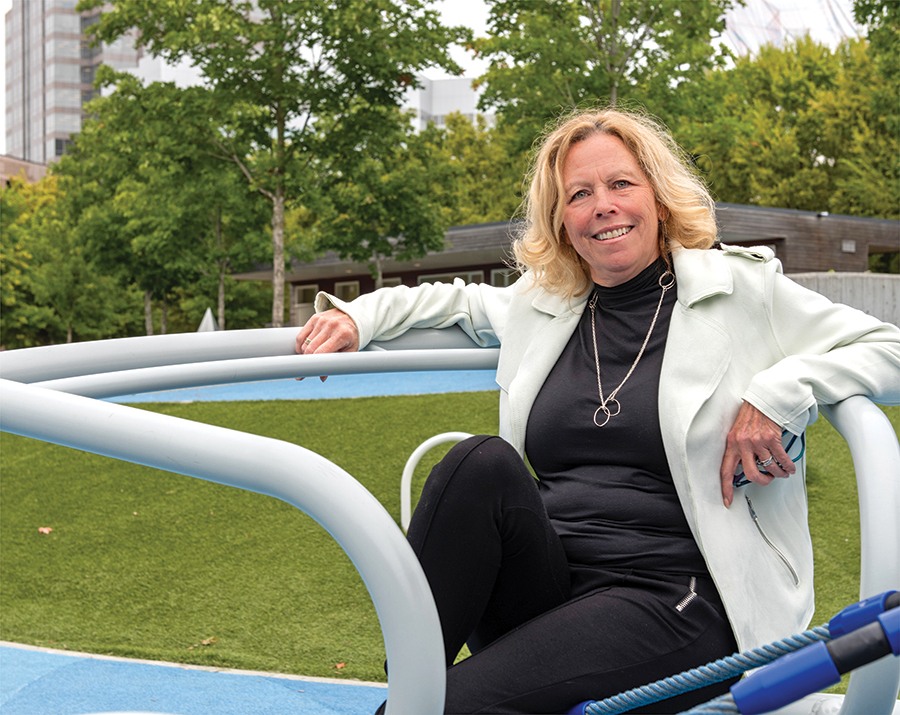
Laura Way, CEO of ArtsGreensboro since 2019, says she learned about development, community building and, most importantly, “about putting your money where your mouth is” from no less than banking icon Hugh McColl (one of North Carolina’s top visionaries) when she was a vice president at Charlotte’s McColl Center before heading the GreenHill Center for North Carolina Art. “I love art, she says. “But I am not a curator. Not an expert on who’s a rising star, or why.” An M.B.A. and prior experience made her a hand-in-glove fit for ArtsGreensboro, where she helped develop the Greensboro Cultural Arts Master Plan, a “roadmap” created in 2018 for the city’s cultural and creative future.
OH: What’s your hope for the arts in Greensboro?
LW: My hope for Greensboro is the arts are not a “nice-to have.” They are recognized as a “need-to have” — for the love of art, how [the arts] play a role in education and health, bring people together to form common bonds, revitalize our economy and make our city and county a destination and model for excellence.
OH: Can you tell us about yourself and what you hope to accomplish?
LW: I arrived here in 2009 to interview as the director of GreenHill, staying with Dabney and Walker Sanders for a week. If you were open to being welcomed, people wanted to welcome you.
[After being hired,] I stayed in the same house in Fisher Park, and it has been my neighborhood. On New Year’s Eve, 2015, I met my boyfriend [developer Andy Zimmerman]. We’re a good couple. He always says, “Do it like you mean it.” Andy wants his imprint to be something special — he’s actualizing it through redevelopment. I want my imprint to be a more creative, vibrant city, where people feel they have a home here and make a good living.
OH: How can ArtsGreensboro help accomplish that?
LW: We need to incentivize people to stay here, move here. The Arts Council was founded to support the EMF, the Symphony and Carolina Theater 60 years ago. People didn’t think about anything outside that. It wasn’t in the gestalt of the times.
OH: You’re unusual in that you have an M.B.A. and found your way into art organizations. Can you speak to that?
LW: Even though I studied economics, I sat in religion and philosophy classes, and they required you to look at everything through the liberal arts lens. We have too many small, emerging organizations that don’t have the capacity to grow. And fewer organizations of color that have no capacity without significant investment. One study found their budget sizes are significantly smaller than in benchmark cities. Everyone deserves access to art. But what I’ve learned over the last two-and-a-half years at ArtsGreensboro is that we have to be careful how we define art. Art is based in Eurocentric traditions that are primarily white. Art takes different connotations, and it is developed in different ways
OH: Can you discuss the arts in a city walloped by a pandemic?
LW: When the pandemic set in, I saw a clear path. It allowed us to lean in and say we can effect change. We launched an artists’ emergency fund and raised $100,000 immediately. We’ve never lived through anything like this pandemic. [Given my background,] I can do the research, crunch the numbers, look at the data. Working with Steve Colyer [of Greensboro Bound], we ascertained the median hourly salary of people working in arts, entertainment and recreation was $11.47. People cannot survive on that! We need a stronger creative sector. If you can’t support creative artists, what’s the point of having organizations?
OH: What did you learn from the pandemic?
LW: The pandemic made me more reclusive. I focused on Andy and my dog, Gravy. Andy bought an RV and we went camping. We took the RV on the Nantahala. At Christmas, we went to the coast. Both of us are public people. But Andy is very interested, very involved with others. I’m more private. My Sunday morning routine, if up at 7 a.m. and alone, is to have a long hike with Gravy. We’ll go to Starbucks and get a coffee for me — Gravy gets a Puppuccino.
OH: What are you reading? Watching?
LW: I don’t sleep — get maybe 4–5 hours a night, which I’ve learned since getting a Fitbit. I think a lot about work. I listen to The Daily. I like podcasts. I watch Jon Stewart.
OH: What were the first 10 years of your life like?
LW: Most of my memories of my first decade before my parents divorced involve my [six] siblings. It was sort of disjointed, and uncertain. So, I invented my own little world. And I became quite insular.
My father remarried, and we all moved with him to Syracuse, N.Y. In fourth grade I got rheumatic fever. That was the year when I stabilized. A year of being nurtured. A year of no drama. It shaped my ability to be with myself and self-isolate. That year shaped who I am today.
OH: What would you tell your 10-year-old self?
LW: Someone told me I wasn’t smart enough; I wouldn’t amount to much. . . . It stuck with me. But I would probably tell my 10-year-old self that it is OK to love and trust. I do love people. I realized growing up in a big family that each of us has our own reality. We compartmentalize our childhood. Later in life, it’s hard to decipher what was our own internal myth.
OH: What do you think Greensboro will look like in 10 years?
LW: In 10 years, [I hope] we are a more connected community — where our college and university students see themselves staying here, our streets and neighborhoods are safer and the talk of failing schools is behind us. And art and creativity are abundant and authentic. And then I will retire. OH
—Cynthia Adams
DONNA BRADBY
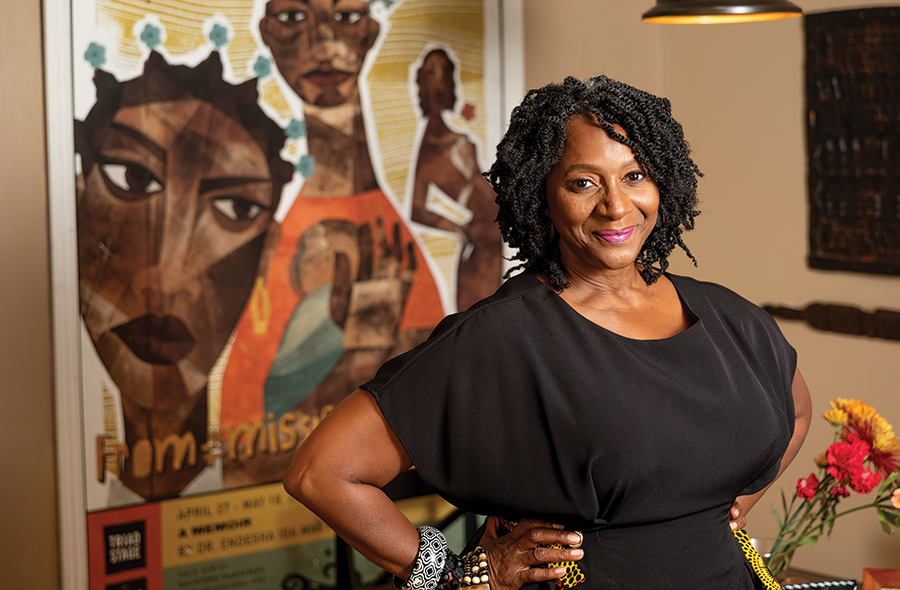
An unabashed lover of Greensboro, local theater maven Donna Bradby has owlish vision that swivels easily from past to future — hers and the city’s. At 59, she summons images from her childhood in Greensboro’s Cumberland Courts assisted housing community, then pans to modern-day scenes of artistic activism on Elm Street. With the practiced eye of a storyteller, she relates them with the frisson of someone who knows her way around the stage. She comes by her creativity honestly: Off the clock, her mother was a gospel singer, her father, an actor and musician. Following suit, Bradby is an adjunct professor and director of marketing for the theatre arts program at N.C. A&T State University. She’s also the executive director of the homegrown Touring Theatre of North Carolina, and on the board of Triad Stage. “I feel so connected to this city as an artist, as a woman, as a creator,” she says. “I’m so grateful that this is where I live.”
OH: Can you reflect on the last 10 years in Greensboro?
DB: Greensboro, to me, takes some heavy hits around race. People thinking that we’re ignorant, that the political climate in Greensboro is in turmoil. All of these things, to a certain extent, are true. But on the other hand, we’re resilient. We will change.
OH: So in the past 10 years, there’s been an ongoing tug of these forces in Greensboro, many of them racial?
DB: Yeah, and I don’t think that’ll ever end for us. . . . There will always be some kind of racial tension or divide. And then 10 people will come together and say, “I don’t want to do this anymore. I want to be together.” And a year later, 12 more people will say, “I get it.”
I think all relationships have a push and a pull. We can co-exist. We don’t have to agree on everything. We don’t have to be best friends.
OH: What are some memories from the first 10 years of your life?
DB: I did arts camp at Windsor Center and at Lincoln school. I went to Mt. Olivet AME Zion Church, and I still belong. That’s the first place I ever took a creative dramatics class, in the fellowship hall, and it really shaped me. I loved third grade at Porter Elementary. Mrs. Quillian was the teacher. That was the year we learned cursive. I was the only little black girl, and there was one little black boy in the class. I do remember racial slurs, but I was always clear about who I was. I always came home to a safe space.
OH: Who was instrumental in that?
DB: My Aunt Annie Ruth was my favorite person. She used to say, “Other families are jealous of our family. We’re so good-looking and smart.” And if you told us different, we didn’t understand that. She could see good in a serial killer. She always found something good in people.
OH: Fast-forward to the last 10 years of your life. Can you share an experience that has affected your personal growth?
DB: This story I’m about to tell you is funny, but it’s not funny. When I was in junior high school at Mendenhall, I had a bully. She was an African-American young lady, and that was a tough time for me. Even though I came home to a safe space, I was in that teenager, awkward I-don’t-know-who-I-am stage. I attempted to kill myself with pills because of the bullying. I was so frightened. I said if I ever saw her (the bully) again, as an adult, I was gonna jump on her . . . I ran into her a little over a year ago at the bank. I thought, “OK, it’s going down in the bank. Should I take my earrings off? Should we do it in the parking lot? Security, get ready.” We locked eyes. She came up to me and said, “Donna, you look so pretty. We’re so proud of you. I’ve never been to see one of your plays, but we read about you in the paper.” My ego kicked in. I hugged her and kissed her. I think we exchanged numbers. Then, when she walked out the door, I said to myself, “Damn!”
OH: There it was, right?
DB: I shoulda kicked her ass. What was wrong with me? But she embraced me. It was weird. It was one of the weirdest experiences that I’ve had in the last 10 years.
OH: What shifted for you?
DB: My spirit just opened up. I think everybody wants to be embraced. I always wanted to be friends with her.
OH: And how did you reckon with that experience?
DB: She was a part of who I am now — the courage I have now, the boldness I have now. . . . I believe everyone comes into your life for a reason, good, bad or indifferent, and I want people to know you can get on the other side — and there’s another side to it.
OH: What do you see in Greensboro in the next 10 years?
DB: I see more innovative artistic things happening. I think there’s a tide of more corporate support for the arts here. On the political scene, I think we’re going to be at the center of what’s happening next in a way that’s going to change policies around voting. When you look at the civil unrest and the civil rights in this area — and you look at the people on our city council — the up-and-rising new people who want to make a political stand and have a voice — I think there’s going to be some coming together, some unity. I believe in this city. People like to worry about how long it took for something to happen. It’s happening! Jackson Library (at UNCG) just did an exhibit on gay bars in Greensboro. Come on! I love you, Greensboro! When George Floyd was killed, our artists went downtown and created murals. I believe chaos has to happen. I don’t mean bad chaos. I mean chaos in a way that’s going to wake us up, that’s going to hit us in the face and bring us home.
OH: If you were the director of a play called “Greensboro,” where would you shout “cut” and where would you shout “action”?
DB: I would shout “cut” at the Woolworth’s sit-ins (1960), then I would take up action during Black Lives Matter (2020) because I think they are pivotal points for this city. It’s the same story, give or take some specifics. It’s the same because we took action, we rose up, we were at the forefront, we were bold, we joined the nation. Even the people who don’t believe in it weren’t quiet. OH
—Maria Johnson
MAX CARTER
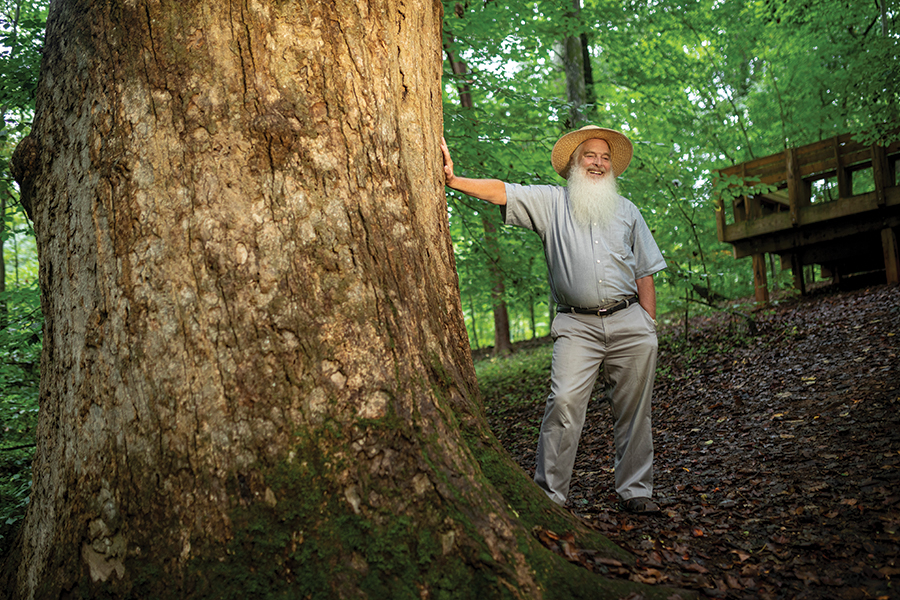
If you can’t spot him by his Santa Claus beard and ever-present hat — a straw fedora in the summer and a broad-brimmed black lid in the winter — you’ll know him by the lively blue eyes and rollicking laugh that make 73-year-old Max Carter appear to be much younger than he is. A fixture in Greensboro’s Quaker community, he retired from Guilford College in 2015, capping a career of leading campus ministries and religious studies. His specialty: Speaking truth to power. His life is full of examples, from Carter’s own conscientious objection to the Vietnam War and his role as a peacemaker in the Israeli-Palestinian conflict — he visits the West Bank city of Ramallah annually to bring enemies face to face — to his persistent lobbying of local government to support a Quaker Heritage Community. Since retiring, he has written three books and is working on a fourth. He teaches for the Shepherd’s Center of Greensboro and for N.C. State’s Osher Lifelong Learning Institute. Fun fact: When Carter was a freshman at Ball State University in Indiana, he lived on the same floor as David Letterman, then a junior. “He didn’t have the time of day for us mere frosh,” says Carter. “At least my beard is longer than his is now.”
OH: What do you see when you look ahead for Greensboro in the next 10 years?
MC: In so many ways, this city represents speaking truth to power. If we could only bottle it, it could be a gold mine.
OH: An example?
MC: We used to take Guilford students to the Underground Railroad Tree on campus to tell the story about 12-year-old Levi Coffin confronting 85-year-old David Caldwell. Levi Coffin was not yet the president of the Underground Railroad. He was a farm boy of minimal education. This was about 1810, and David Caldwell was the guy in North Carolina. He started the first college and the first Presbytery. He was Princeton educated. He was a patriot of the Revolutionary War and the War of 1812. Caldwell was an enslaver, and he was going to send his slave Edie to Charlotte to be domestic help for their son, who was just married, which meant she would be separated from her husband and family. She took her newborn infant and ran away. They went to Levy Coffin’s family’s farmhouse on Horse Pen Creek, and they were taken in. Little Levi heard this story, and he couldn’t imagine that a minister of the gospel would do this. He said, “I’ve got to confront David Caldwell.” If he blew the whistle on his parents, they could be arrested, and he could be an orphan. But in Quaker culture, if you have a concern that’s rooted in truth, you’re supported. So his parents said, “Sure.” This kid walked seven miles from his home, confronted David Caldwell, and talked him out of it. It’s a remarkable story.
OH: What are some modern examples of this kind of courage?
MC: This city has done that with February 1, 1960 [the start of the Woolworth’s sit-ins]; with the Underground Railroad; with getting Josephine Boyd Bradley to integrate Greensboro Senior High, now Grimsley. She was recruited by Quakers to do that.
OH: How much of Greensboro’s present-day personality is influenced by the Quaker presence in our history?
MC: It has a lot more bearing than we talk about. Williamsburg and Old Salem have capitalized on far less. Could you imagine a walking tour here, where you go from a mass grave of British and American soldiers, to the origins of the Underground Railroad, to the history of integration? My limited vision for a Quaker Heritage Community could be, with the resources of the city, turned into a remarkable tourist attraction.
OH: We have a feeling that your vision of historical tourism does not include a Quakerland with an Underground Railroad roller coaster ride. Or does it?
MC: We used to joke about that: Six Flags Over George Fox [a road through Guilford College], but no. It would violate Quaker simplicity.
OH: Can you reflect on the last 10 years of your life and the significant experiences that have affected your growth?
MC: I retired in 2015, and when you reach a culminating point like that, you look back. People say, “Oh, you’re an institution, you’ll be remembered forever,” and all of that kind of stuff. No. Campus cultures change every three years. There were about 25 different programs I began in my 25 years at Guilford. All but one has disappeared. As I reflected on that with a colleague, he said, “When I was there, I thought ‘I’m creating a future for this college,’ and I’ve now realized I was creating a wonderful present for myself.” That has been a great solace.
OH: What can you tell us about the first 10 years of your life?
MC: My first 10 years of life were spent on an Indiana dairy farm. My father died of a brain tumor when I was 5, leaving my mother with three boys and pregnant with the fourth on an 80-acre farm. My memories are farm work. Herding cows, milking cows, working in the garden, helping with hay, silage, and perfecting the ability to get under a hen and grab all the eggs you can and get out before your hand is pecked off.
OH: Can you think of a formative experience that helped to make you who you are?
MC: I started school at age 5. I was making Ds and Fs. I was not into it. A substitute teacher said take your papers out and design a Christmas tree, bring it up to me for approval of your design, then color it in. It was the first thing I’d gotten excited about. I made this design and decorated it and put Christmas presents under it. I colored it in. I took it up to Miss Allie and showed it to her, kind of expecting a pat on the head. She looked at me and said, “You didn’t get approval for this first, did you?” I said “No,” and she ripped it into shreds and tossed it in the trash basket.
OH: And?
MC: It ruined me for about eight years of education.
OH: Is this why you became comfortable with being anti-authoritarian?
MC: Yes. And that’s why I could never tear up, in any way, student papers. I can see every moment of that first-grade experience. I could never do that to a student. I was probably easier than I should have been as a college professor. OH
—Maria Johnson




